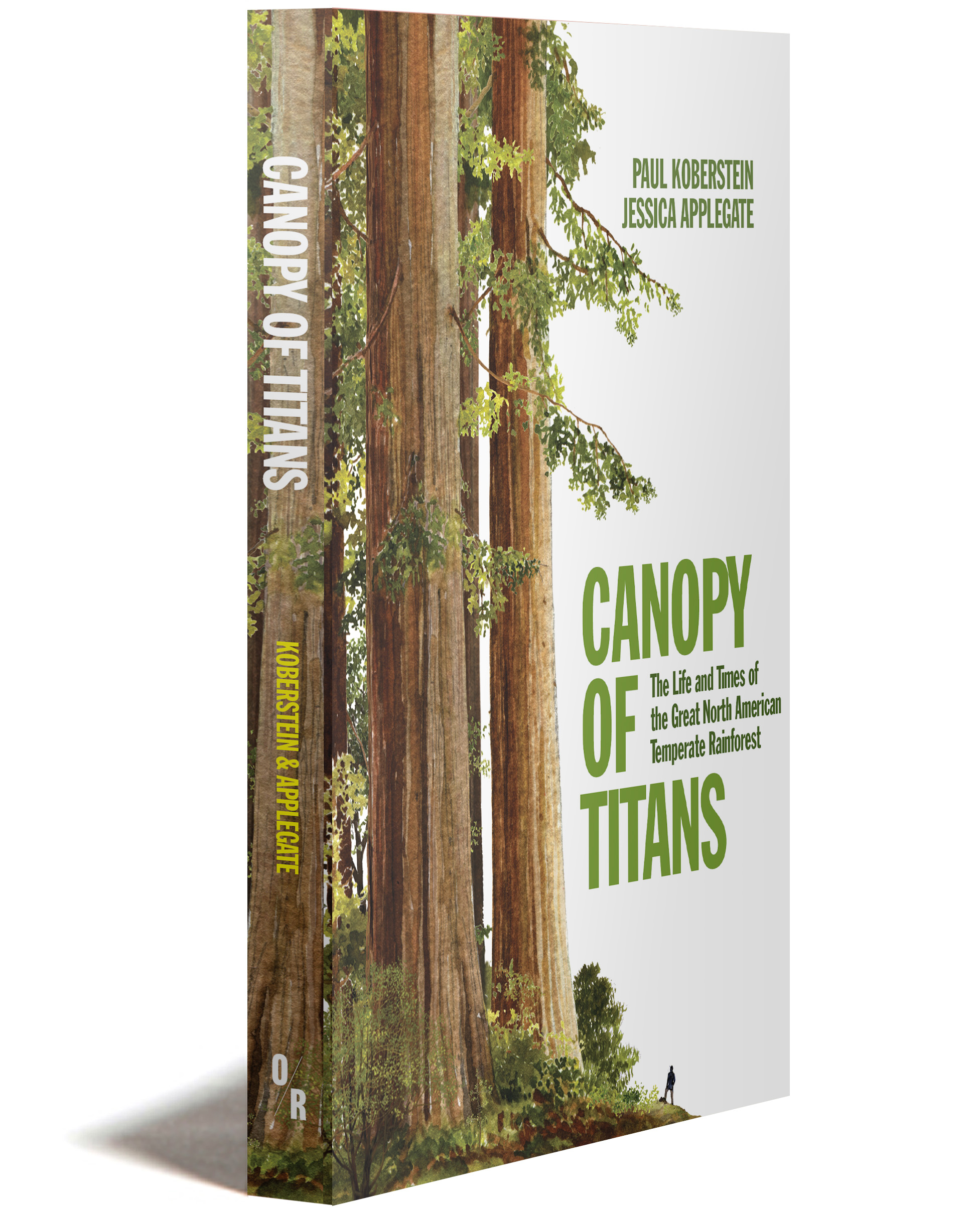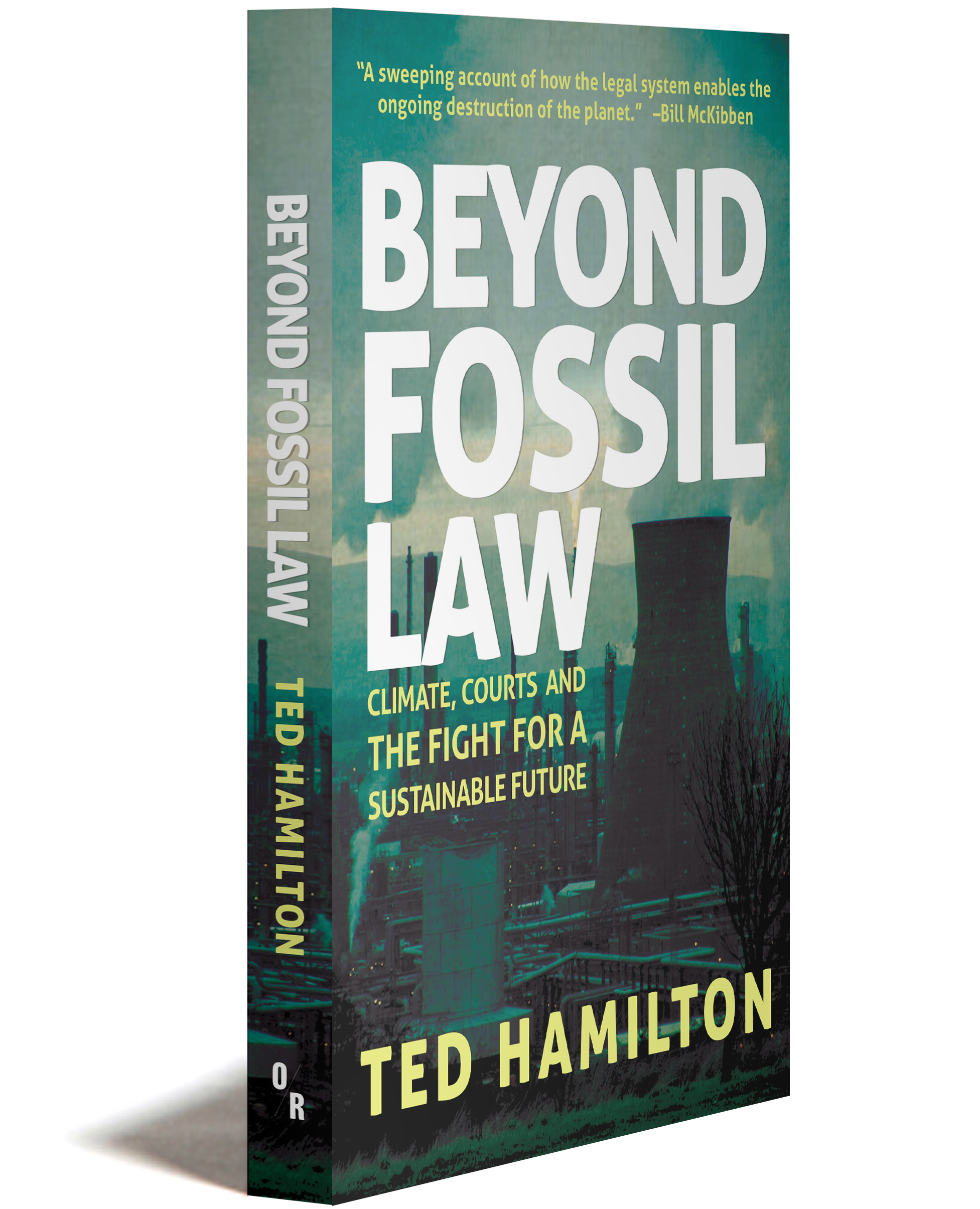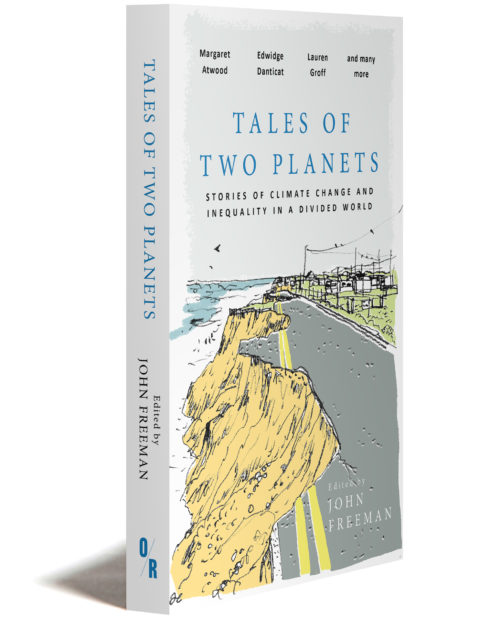Canopy of Titans
THE LIFE AND TIMES OF THE GREAT NORTH AMERICAN TEMPERATE RAINFOREST
PAUL KOBERSTEIN and JESSICA APPLEGATE
“An eloquent plea for saving one of North America's last great forests.” —Elizabeth Kolbert
“We've understood that the Amazon rainforest is crucial to the planet but, as this very fine book makes clear, it is no more important than the great temperate forests of the Pacific coast.”
—Bill McKibben
Tweet
About the Book
In Canopy of Titans, Paul Koberstein and Jessica Applegate examine the global importance of the Pacific Coastal Temperate Rainforest that stretches from Northern California to Alaska. Their urgent and authoritative account sets out the threats facing a vital environmental resource, and celebrates the beauty and complexity of one of the world’s great forests.
Drawing on years of on-the-ground reporting, Koberstein and Applegate pull back the curtain on policies of governmental bodies that have seriously diminished the rainforest’s capacity to store carbon, and uncover industry practices that have led to the destruction of swaths of a major ecological resource. Additionally, using an environmental justice perspective, Canopy of Titans shines a light on the Indigenous communities that have lived in the rainforest for millennia, and the impact forest policies have had on their lives.
400 pages • Paperback ISBN 978-1-68219-345-7 • E-book ISBN 978-1-68219-346-4
About the Authors

Paul Koberstein is the editor of Cascadia Times, which he co-founded in 1995. He was previously a staff writer for The Oregonian and for Willamette Week. In 2016 he won the Bruce Baer Award given annually to an Oregon journalist for excellence in investigative journalism and, in 2004, the John B. Oakes Award for the most distinguished environmental journalism in the United States.
Jessica Applegate is managing editor and photographer for Cascadia Times. A lifelong environmental activist, she works with special needs young children and is a founding member of Eastside Portland Air Coalition, a grass roots group that spurred creation of statewide air toxics regulatory overhaul, Cleaner Air Oregon.
Read an Excerpt
The Amazon of the North
In 2020, when we were in the midst of writing Canopy of Titans, an unprecedented ring of deadly firestorms engulfed the giant conifer rainforest surrounding our hometown of Portland, Oregon, packing blood-red skies with a thick grit. Our lungs filled with smoke. We ached with every labored breath.
Some of the most severe wildfires ever in the American West torched the parched landscape with great fury, but we weren’t alone in the crosshairs. Forests burned everywhere: the Americas, Europe, Africa, Asia, and Australia. The most intense fires burned through the giant eucalyptus forests of southern Australia. Australians called the season their “black summer,” the smoke so thick it triggered home fire alarms in Sydney. Smoke also smothered Africa from the Sahel to South Africa. And in South America, more than 80,000 fires blazed through the Amazon rainforest, many ignited by humans clearing land for agriculture.
Forests were supposed to be our last line of defense against climate chaos, but instead have morphed into an existential threat. Fires and deforestation have transformed damaged forests worldwide into big polluters, alongside coal and other carbon-belching industries.
Over the last decade, people died by the thousands in heat waves, fires, hurricanes, floods, and famine – all supercharged by the chaotic climate. But the rampaging climate is just getting started on its fiery path of destruction. Severe weather events rarely seen in normal times are now seasonal menaces. Seasonal menaces are now the new normal. We decided to write Canopy of Titans to see what must be done to get back to the old normal, or if it’s even possible.
We are concerned about wildfires, but do not intend to disparage them. Forests evolved with fire. Fire is a necessary element in a healthy, fully functioning ecosystem. Fires enable ecosystems to regenerate. After a fire, the forest will regrow. But wildfires can bring horrific consequences to the human communities that encroach too deeply into the forest. Fires burn homes and towns, causing death and destruction all along their path.
Climate change is drying out the fast-burning organic material that collects on the forest floor, and has been linked to a doubling in the number of large fires between 1984 and 2015 in the western United States. Unless communities move out of their way, fires will become increasingly more dangerous as the climate continues to change.
Doomsayers tell us human civilization is already toast. The worst consequences of climate change may be avoidable, but humanity is not likely to take the necessary actions. Optimists, on the other hand, insist there is still time to act. Resolving the climate crisis will be a test of our will, ingenuity, and ability to cooperate.
From the start, we knew the solution must include no more burning fossil fuels. Decisive steps have been taken in this direction. Gasoline-powered cars and coal plants are on the way out. Renewables, electric cars, and batteries are in. Much more must be done to shut off the oil spigot, but ending the oil age won’t end the crisis. Industry has dumped about 283 gigatons of carbon into the air since the beginning of the Industrial Revolution in the 18th century, a vast amount, and almost all of it is still up there. We won’t be safe until we remove the excess carbon, and find a secure place to put it.
But where? People are spouting all kinds of ideas, some loony, some self-serving, some promising. Corporations are betting on unproven technologies known as carbon capture and storage (CCS), or methods that would trap carbon pollution before it enters the atmosphere, or remove it from the air and store it underground. The technology so far has failed to deliver the promised results. Globally, only twenty-six CCS plants are in operation today, removing a paltry 0.1 percent of annual carbon emissions.
In our search for a more effective way to deal with the excess carbon, we reviewed hundreds of academic papers and interviewed dozens of scientists. They told us the most promising – and proven – carbon capture technology is the tree. Only forests, ecosystems of trees, roots, soils, woody biomass, can remove carbon from the air and store it for centuries at the necessary scale. Nothing else comes close, other than the oceans.
But not just any forest will do. Some people say we should be planting trees, but as a climate solution, the benefits of tree planting have been exaggerated. The tree you plant today won’t store much carbon for decades, and after that, it’s slow rolling. We don’t have time to wait.
On the other hand, existing forests, especially old-growth forests, can help right now. Older, mature, and maturing forests are already sequestering massive amounts of carbon and, if protected, can continue storing it for centuries. Protecting these forests must be part of any climate mitigation strategy, along with shutting down carbon emissions – the two essential components of an effective climate strategy.
Should we protect all forests from logging and deforestation? If not, which ones should remain standing? International climate politicians have long favored protecting the tropical rainforest in the Amazon basin, the largest rainforest in the world. Other tropical rainforests are found in Africa’s Congo basin and in Southeast Asia.
But acre-for-acre, tropical rainforests are not particularly carbon-rich. Our research told us the world’s most carbon-dense forest is located instead along the North Pacific Coast, in the temperate zone halfway between the tropics and the Arctic Circle, the forest in our backyard. Though it has no official name, it’s known as the Pacific coastal temperate rainforest. It is the largest temperate rainforest in the world, and home to the world’s tallest trees.
In the Media
- “Another Timber War Looms” — CANOPY OF TITANS authors Paul Koberstein and Jessica Applegate write for Earth Island Journal (11/28/2023)
- “The Logjam in Biden’s $50 Billion Dollar Wildfire Plan” — CANOPY OF TITANS authors Paul Koberstein and Jessica Applegate write for Undark Magazine (11/23/2023)
- “Love Forests? Meet the Authors of ‘Canopy of Titans’” — CANOPY OF TITANS authors Paul Koberstein and Jessica Applegate interviewed in The Tyee (10/11/2023)
- “Why the world’s climate fate could depend on the ‘Amazon of the North’” — CANOPY OF TITANS authors Paul Koberstein and Jessica Applegated featured in Columbia INSIGHT (10/5/2023)
- “The West’s overlooked rainforests can address climate change” — CANOPY OF TITANS by Paul Koberstein and Jessica Applegate featured in High Country News (9/19/2023)
- ”The Rainforest in Our Backyard” — CANOPY OF TITANS by Paul Koberstein and Jessica Applegate reviewed in Undark (9/15/2023)
- “Telling the Story of Temperate Rainforest Giants” — CANOPY OF TITANS authors Paul Koberstein and Jessica Applegate appear on Terra Verde (3/31/2023)









